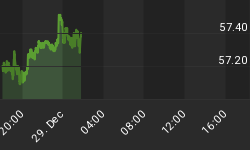More than one million American student loan borrowers default on their debt each year, a new report says.
That means by 2023, approximately 40 percent of borrowers are expected to default.
That is according to a new report by the Urban Institute, a nonprofit research organization dedicated to developing evidence-based insights on critical socioeconomic issues.
Researchers found about 250,000 student loan borrowers see their debts go into default every quarter, and an additional 20,000 to 30,000 borrowers default on their rehabilitated student loans.
“My results indicate that the likelihood of student loan default is positively correlated with holding other collections debt (e.g., medical, utilities, retail, or bank debt). About 59 percent of borrowers who defaulted on their student loans within four years had collections debt in the year before entering student loan repayment (compared with 24 percent among non-defaulters). Those who will default on their student loans are more likely to reside in neighborhoods that have more residents of color and fewer adults with a bachelor’s degree or higher, but a borrower’s personal credit profile is a stronger predictor of default than the neighborhood where she resides,” said Kristin Blagg, a research associate in the Education Policy Program at the Urban Institute.
The average defaulter is more likely to live in Hispanic and black neighborhoods, Blagg found. Her previous research has shown that minorities are more burdened by their education debt because their parents have a lower net wealth as well as higher rates of unemployment. These neighborhoods also have a median income of around $50,000, compared with $60,000 for non-defaulters.
Related: Is The iPhone X Too Successful?
The Urban Institute made a startling discovery: Those with the smallest loan balances had a higher probability of not paying off their debt. In fact, 1 in 3 people who had a student loan balance less than $5,000 defaulted within four years, compared with 15 percent of borrowers who owed more than $35,000.
This is because students who dropped out of college have less debt, but are easily burdened by debt since they do not have the benefit of a degree, said Mark Kantrowitz, a student loan expert, who spoke with CNBC.
Also, Kantrowitz said, “They often lack awareness of options for dealing with the debt, such as deferments, forbearances, income-driven repayment and loan forgiveness.”

(Click to enlarge)
The report then describes the relationship between a borrower’s credit profile and student loan default in a nationally representative sample of student loan borrowers, over the first four years of repayment. It found that by the time the student loan falls into the default, the borrower will see their credit score plunge by 60 points, to an average of around 550. Borrowers who stay current, usually have credit scores in the high 600s.
As we have mentioned, millennials are delaying marriage, home-buying and having kids (pretty much delaying the American dream), simply because of their gig-economy job(s) cannot cover debt servicing payments of their loans.
“Negative effects of student loan default can be wage garnishments, tax offsets, and other methods of loan collections,” said Elaine Griffin Rubin, senior contributor and communications specialist at Edvisors. “In addition, some states suspend or revoke state-issued professional licenses, and some states suspend a driver’s license because of a defaulted loan.”
To make the situation worse, defaulting on student loans increases the balance, likely due to collection fees and the accumulation of interest. Kantrowitz said a borrower could expect their balance to jump by over 10 percent after default.
These myriad consequences that come with a default can be hard to recover from, Kantrowitz said.
“At best, it delays participation in the American Dream,” he said. “At worst, they are shut out permanently.”
Student debt is a crisis that many Americans will not be able to recover from. The College Board, a non-profit organization, says the average cost of a U.S. degree is $34,740 a year at a private college, minus living costs. Related: Petro-Yuan Gains Momentum, But It’s A Still Risky Endeavor
Graduates of the Class of 2016 owe a staggering $37,000 each in student loans. Total Student Loans Owned and Securitized, Outstanding (SLOAS) has surpassed the $1.5 trillion mark in Q2 2018, which is second only to home mortgages among categories of consumer debt and the main reason Americans’ household debt has swelled to a record high.

(Click to enlarge)
Credit bubbles are all the same. It just happens that the life cycle of the student debt bubble is nearing a deleveraging period. According to both Keynesian and monetarist theory, when the student debt bubble cracks, the state should intervene directly, and bailout the millennials who made terrible life decisions in accumulating massive amounts of debt for a worthless liberal arts degree, simply because the myth of going to college would usher in a high paying job. As it has become increasingly evident, that is not the case in today’s gig-economy. The failing education system has duped millennials, they have now realized that the greatest con of all time is college.
By Zerohedge.com
More Top Reads From Safehaven.com

















